Apron Vs Undermount Sink
Choosing between an apron vs undermount sink can be hard. One fact is that both have unique benefits in the kitchen. This article will guide you through their pros and cons, helping you decide which fits your home best.
Keep reading to find your perfect sink.
Key Takeaways
- Apron sinks, also called farmhouse sinks, are deep and wide. They fit well in country-style kitchens. These sinks can be heavy and might need special cabinets.
- Undermount sinks attach under the counter. They make counters easy to clean by wiping crumbs straight into the sink. This type fits modern kitchens best but may not work with all counter materials.
- Materials for both kinds of sinks include stainless steel, fireclay, copper, and granite composite. Each has pros and cons like durability or ease of cleaning.
- Installing an apron sink can mean changing your cabinets. Undermount sinks need professional help to install right so there's no water damage.
- Think about your kitchen style, how much care you want to put in, and if you're ready for installation challenges when choosing a sink type.
Overview of Apron (Farmhouse) Sinks
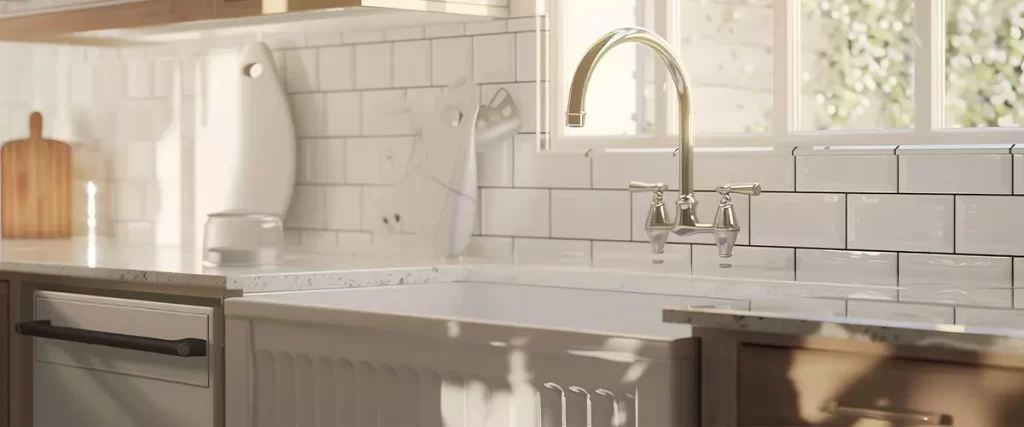
Definition and Characteristics
Apron sinks, often called farmhouse sinks, bring a classic look to kitchens. They have an exposed front panel that stands out from surrounding cabinetry. These sinks are deep and wide, making it easier to wash large pots and pans.
Materials like stainless steel, fireclay, and copper give each apron sink its unique rustic charm or sleek appearance.
Undermount sinks attach below the countertop material.
This creates a smooth transition from counter to sink without any rim between them. They offer clean lines and make wiping crumbs into the sink simple.
Common materials include stainless steel and enameled cast iron for durability and stain resistance.
Choosing between an apron front sink and an undermount sink can make all the difference in your kitchen’s functionality and style.
Now let’s explore common materials used in these types of sinks.
Common Materials Used
Selecting the appropriate material for your kitchen sink is essential for both its aesthetics and functionality. Various materials provide distinctive advantages and appearances for apron front sinks and undermount sinks.
- Stainless Steel: A preferred option for many homeowners due to its heat-resistant, stain-resistant, and easy-to-clean nature. Stainless steel sinks blend seamlessly into both modern or contemporary kitchens and traditional style spaces.
- Copper Sinks: Renowned for their appealing aesthetics, copper sinks acquire a patina over time, introducing a unique character. Their natural antimicrobial properties make them an optimal choice for dishwashing.
- Cast Iron Sinks: Exhibiting durability, cast iron sinks are available in a variety of colors due to their enamel coating. Owing to their weight, these sinks require solid support from the base cabinet.
- Fireclay Sinks: Constructed by shaping clay into the sink form and subsequently baking it at high temperatures, fireclay sinks exhibit considerable hardness and resistance to scratches or chips. These sinks are a frequent selection for farmhouse sinks, providing a conventional appearance.
- Granite Composite: Comprising crushed granite amalgamated with resin fillers, these sinks are resistant to scratches and have a non-porous surface, offering seamless integration into granite countertops for a stylish design.
- Quartz Composite: Analogous to granite composite, quartz composite sinks display a high level of toughness and an ability to resist stains from acidic foods or harsh chemicals. Their non-porous surface makes them straightforward to maintain.
Each material carries its advantages and disadvantages contingent on your kitchen requirements, aesthetic attraction, and maintenance predilections. No matter if your inclination is towards farmhouse allure with fireclay or cast iron sinks or you are fond of the sleek finish of undermount installed stainless steel or composite models, an ample selection of material options can align with your kitchen design aspirations.
Overview of Undermount Sinks
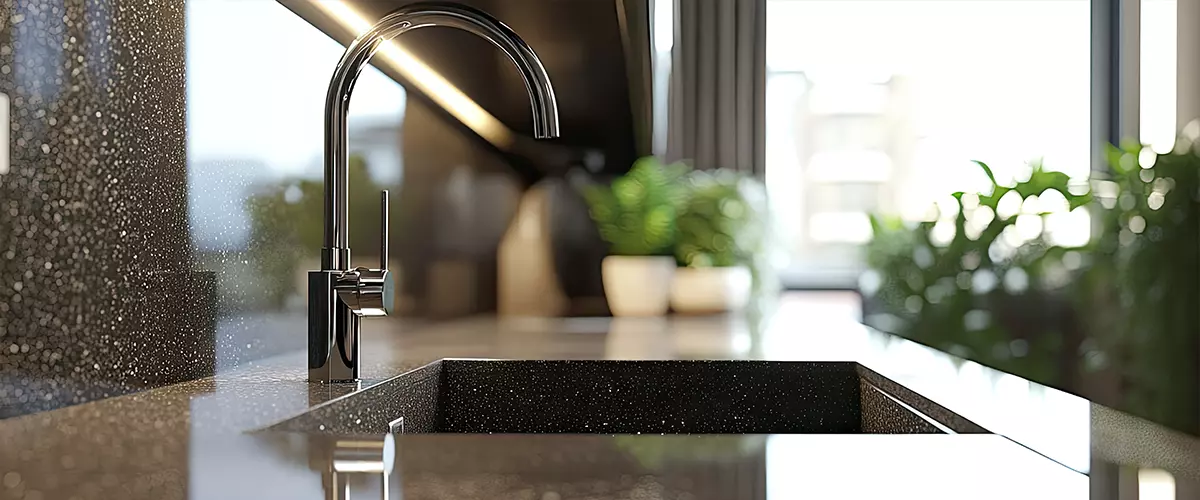
Definition and Characteristics of Undermount Sinks
Undermount sinks attach directly beneath the countertop. This method makes the edge of the counter smooth and clean. It helps to easily wipe debris from the counter into the sink. These sinks give kitchens a sleek and modern look.
Materials for undermount sinks vary, including stainless steel, granite composite, and cast iron. They are known for being durable and easy to clean. This type of sink works well with solid surface countertop materials like granite or marble.
Undermount sinks offer a seamless look that enhances kitchen aesthetics.
Commonly Used Materials
Apron (Farmhouse) Sinks are typically made from durable materials such as fireclay, cast iron, stainless steel, and copper. These materials offer different benefits in terms of durability, aesthetics, and maintenance. Here are some commonly used materials for apron sinks:
- Fireclay: Known for its resistance to scratches and chips.
- Cast Iron: Provides a sturdy and long-lasting option.
- Stainless Steel: Offers a modern look and is easy to clean.
- Copper: Adds a unique and rustic charm with its natural patina over time.
For Undermount Sinks:
- Stainless Steel: A popular choice due to its affordability and resistance to corrosion.
- Composite Granite: Provides a durable and heat-resistant option with various color choices.
- Porcelain: Offers a classic look while being resistant to stains and easy to clean.
Each material brings its own set of characteristics that cater to different homeowner preferences and kitchen needs.
Design Considerations
Suitability for Different Kitchen Styles
Apron sinks, also known as farmhouse sinks, are ideal for country-style kitchens. Their wide and deep design makes them perfect for washing large pots and pans. Apron sinks can be a focal point in the kitchen due to their aesthetic appeal.
On the other hand, undermount sinks are versatile and can fit seamlessly into modern or traditional kitchen styles. They are installed underneath the countertop, which maximizes counter space and gives a sleek look to the kitchen.
Ultimately, choosing between apron and undermount sinks depends on personal preference, but apron sinks tend to complement country-style kitchens while undermount sinks work well with various kitchen designs.
Impact on Kitchen Aesthetics
Apron sinks, with their exposed front and country-style charm, bring a cozy, rustic feel to kitchens. They are particularly popular in farmhouse or country-style kitchens. The wide variety of materials available for apron sinks allows homeowners to choose one that matches the ambiance they want to create in their kitchen space.
In contrast, undermount sinks offer a sleek and seamless look for modern or contemporary kitchens. Their installation method hides the sink rim beneath the countertop, creating a clean and minimalist aesthetic.
This makes them an ideal choice for homeowners seeking not only functionality from their kitchen sink but also wishing to maintain a streamlined appearance.
Both types of sinks have a significant impact on kitchen aesthetics as they cater to different design preferences and styles. Apron sinks lend themselves well to warm, traditional environments while undermount sinks complement sleeker and more minimalist designs.
Therefore, it’s crucial for homeowners to consider how each type will harmonize with their existing cabinet doors, countertops, and overall kitchen style when making this decision about enhancing the appearance of their kitchen space.
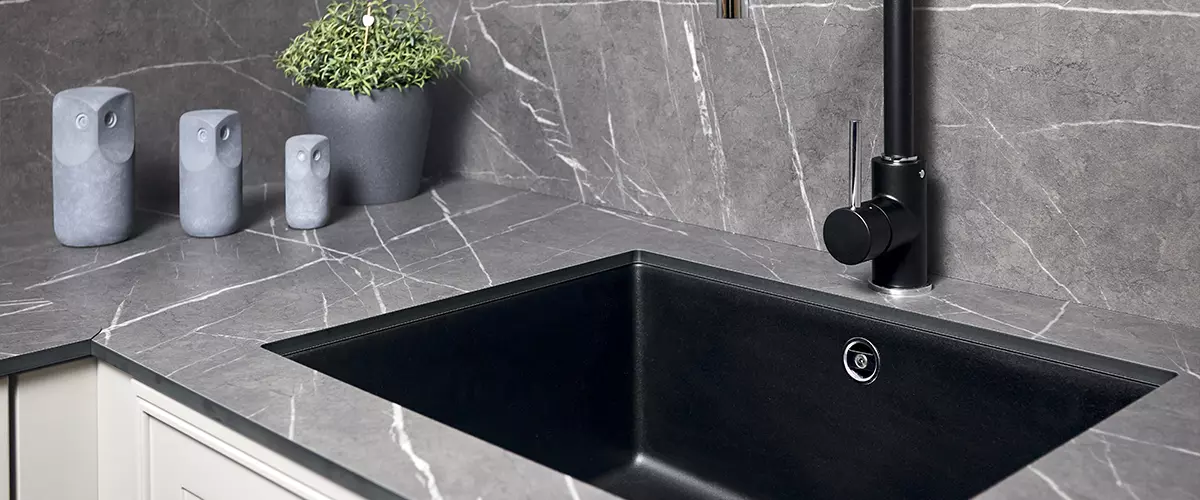
Installation and Maintenance
Installation Differences
Apron (Farmhouse) Sinks:
- Typically require custom cabinet modifications for installation.
- Installation process involves exposing the front apron and supporting it with proper reinforcement to carry the weight.
Undermount Sinks:
- Installed beneath the countertop, creating a seamless look without an exposed rim.
- Requires professional installation to ensure proper support and sealing against water damage.
Maintenance Requirements
Maintaining your kitchen sink is crucial for its durability, cleanliness, and functionality. Here are the key maintenance guidelines you should be aware of:
- Regularly cleanse the sink with mild soap and water to avoid the accumulation of dirt and grime.
- Refrain from using harsh cleaners or pads that may cause surface scratches, especially for stainless steel sinks.
- For apron sinks, examine and reseal the seams where the sink meets the countertop to prevent water damage.
- Utilize a sink grid or mat to shield the sink from scratches and dents resulting from heavy pots and pans.
- Inspect undermount sinks for any leaks or loose fittings to prevent water damage to the surrounding cabinets.
- Consider applying a mineral oil treatment occasionally for specific materials like fireclay to preserve their sheen.
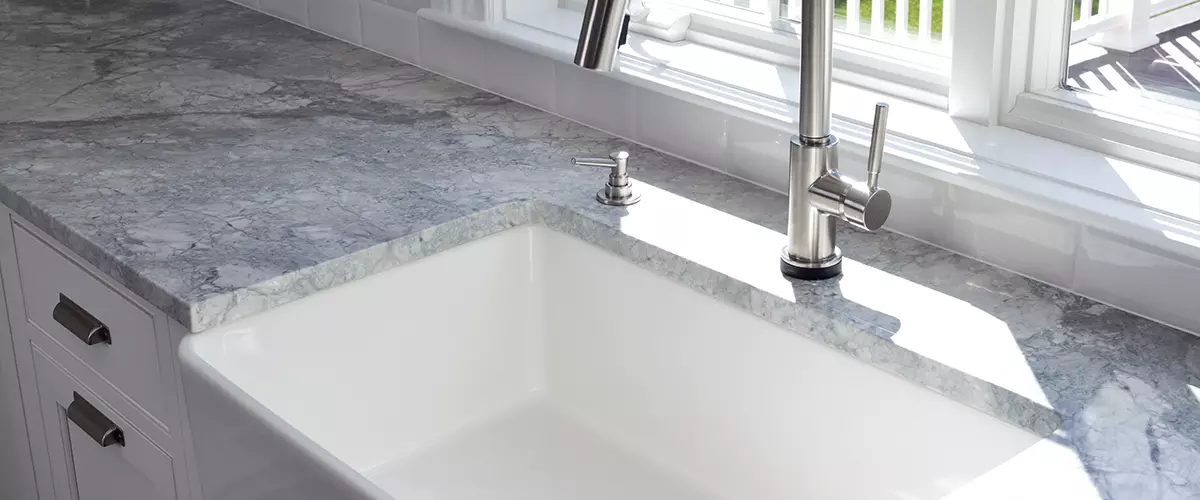
Pros and Cons
Benefits of Apron Sinks
Apron sinks, commonly referred to as farmhouse sinks, provide a spacious and deep basin, which simplifies the process of washing large pots and pans. These expansive sinks are particularly suitable for homeowners who require additional space for dishwashing and food preparation.
They introduce a touch of rustic charm to country-style kitchens and are available in materials such as fireclay, stainless steel, and cast iron, all of which are resilient against heat, stains, and scratches.
The design of the apron sink involves a slight protrusion from the counter, serving as an elegant focal point in the kitchen and elevating its aesthetic appeal.
Given their wide basin and durable materials, apron sinks are an excellent choice for homeowners seeking not only functionality but also aiming to elevate the overall appearance of their kitchen with a premium and fashionable sink option.
Drawbacks of Apron Sinks
Turning to the limitations of apron sinks, it’s important to mention that these sinks can be heavy and may require custom cabinetry. Due to their exposed front, they are more prone to chipping and damage from knocks or bumps.
In addition, the apron design means there is less under-counter storage space compared to undermount options. This could be a restricting factor for homeowners needing ample storage in their kitchen.
Furthermore, installing an apron sink might involve professional help due to its weight and specific installation requirements.
Moreover, cleaning around the edges of the apron sink can be challenging as debris tends to accumulate at its exposed front leading homeowners to spend extra time on maintenance compared to other types of sinks available in the market.
Benefits of Undermount Sinks
Moving on from the drawbacks of apron sinks, let’s focus on the benefits of undermount sinks. Undermount sinks offer a more seamless and modern look in the kitchen, creating a sleek and clean design aesthetic suitable for various kitchen styles.
The installation of undermount sinks underneath the countertop makes cleaning easier as there are no edges or crevices where grime can accumulate. Moreover, this sink style provides homeowners with the flexibility to wipe water directly from the countertop into the sink due to its lack of an overhanging lip, enhancing overall kitchen hygiene.
Additionally, undermount sinks maximize usable space within the sink cabinet and provide wider areas for larger pots and pans while maintaining a cohesive visual appeal in line with contemporary kitchen designs.
The absence of an exposed rim also simplifies countertop maintenance, making it simpler to keep your kitchen looking pristine.
Drawbacks of Undermount Sinks
Undermount sinks may not be compatible with all countertop materials, which can limit your options. They can also be more difficult to install than drop-in sinks, which could lead to increased installation costs and complexity.
Since the sink is mounted beneath the counter, any water or moisture on the countertop can seep into the seams, potentially causing damage over time. Moreover, if your countertops are not made of a durable material like stone or quartz, undermount sinks may not be suitable as they require strong support.
Maintaining undermount sinks can be more demanding due to the exposed edge, which can collect grime and debris. It might require extra effort to keep this area clean compared to overmounted sinks, where there’s no crevice for dirt build-up.
Another downside is that replacing an undermount sink often involves removing and potentially damaging the countertop as well.
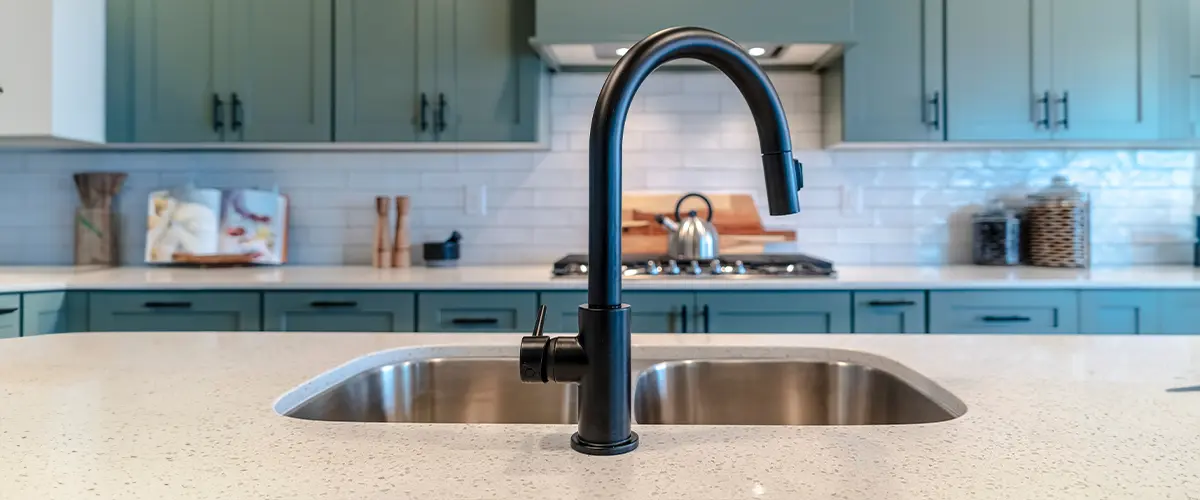
Choosing the Right Sink for Your Home
Factors to Consider
When choosing between an apron sink and an undermount sink, consider the following factors:
- Kitchen Style:
Apron sinks are well-suited for country-style kitchens due to their traditional and rustic appearance.
Undermount sinks work well with modern and contemporary kitchen styles, providing a sleek and seamless look. - Maintenance:
Apron sinks may require more upkeep due to their exposed front, which can accumulate dirt and grime.
Undermount sinks are easier to clean as they have a smooth edge that allows for seamless wiping. - Installation:
Installing an apron sink may involve custom cabinetry or modifications to fit the larger size of the sink.
Undermount sinks require professional installation to ensure a secure and waterproof seal. - Durability:
Apron sinks are typically more durable against heavy use and impacts, making them suitable for households with a high volume of dishwashing. - Undermount sinks offer a versatile option in different materials such as stainless steel or granite composite, each with its own level of durability.
- Aesthetics:
Apron sinks add charm and character to the kitchen with their visible front panel, creating a focal point in the space.
Undermount sinks provide a minimalist and streamlined look that complements a variety of countertop materials.
Matching Sink Style to Kitchen Needs
When selecting a sink style for your kitchen, take into account the size and layout of your space. Undermount sinks can conserve counter space in smaller kitchens. If you have a generous sink with plenty of room for washing dishes, an apron sink might be appropriate.
Moreover, farmhouse sinks are perfect for country-style kitchens. The important thing is to align the sink style with your particular kitchen requirements.
Transitioning to “Design Considerations”…
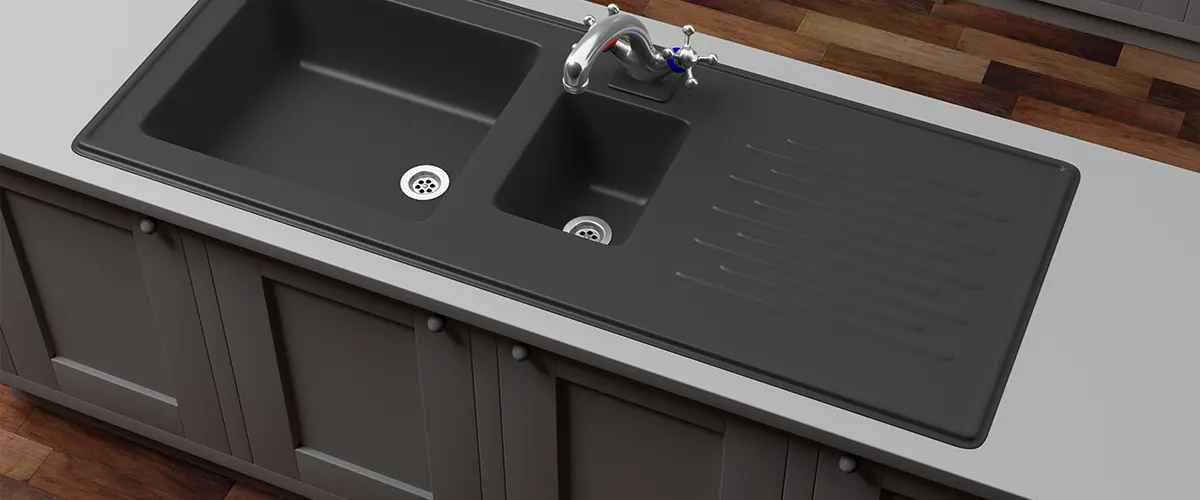
Best Manufacturers of Kitchen Sinks
When choosing a kitchen sink, quality manufacturers can enhance functionality and aesthetics. Here are some of the top brands:
- Kohler
Founded in 1873, Kohler is renowned for innovative designs and durable finishes in a wide variety of sink styles. - Moen
Moen offers a range of stylish sinks renowned for their practicality and modern finishes designed to complement contemporary kitchens. - Blanco
Specialising in high-quality German engineering, Blanco provides elegant sinks that combine functionality with luxury materials and superior designs. - Franke
Swiss manufacturer Franke is known for its stylish sinks that focus on design innovation while maintaining exceptional quality standards. - Elkay
Elkay offers versatile sinks that range from traditional to modern styles, with a strong emphasis on durability and craftsmanship.
FAQs
Why Choose Our Professional Services
With years of experience in sink installation, our skilled team ensures top-quality workmanship. When you partner with the best, you achieve lasting results and save money. Ready to start your kitchen remodeling project? Contact us at (626) 598-0833 today!
